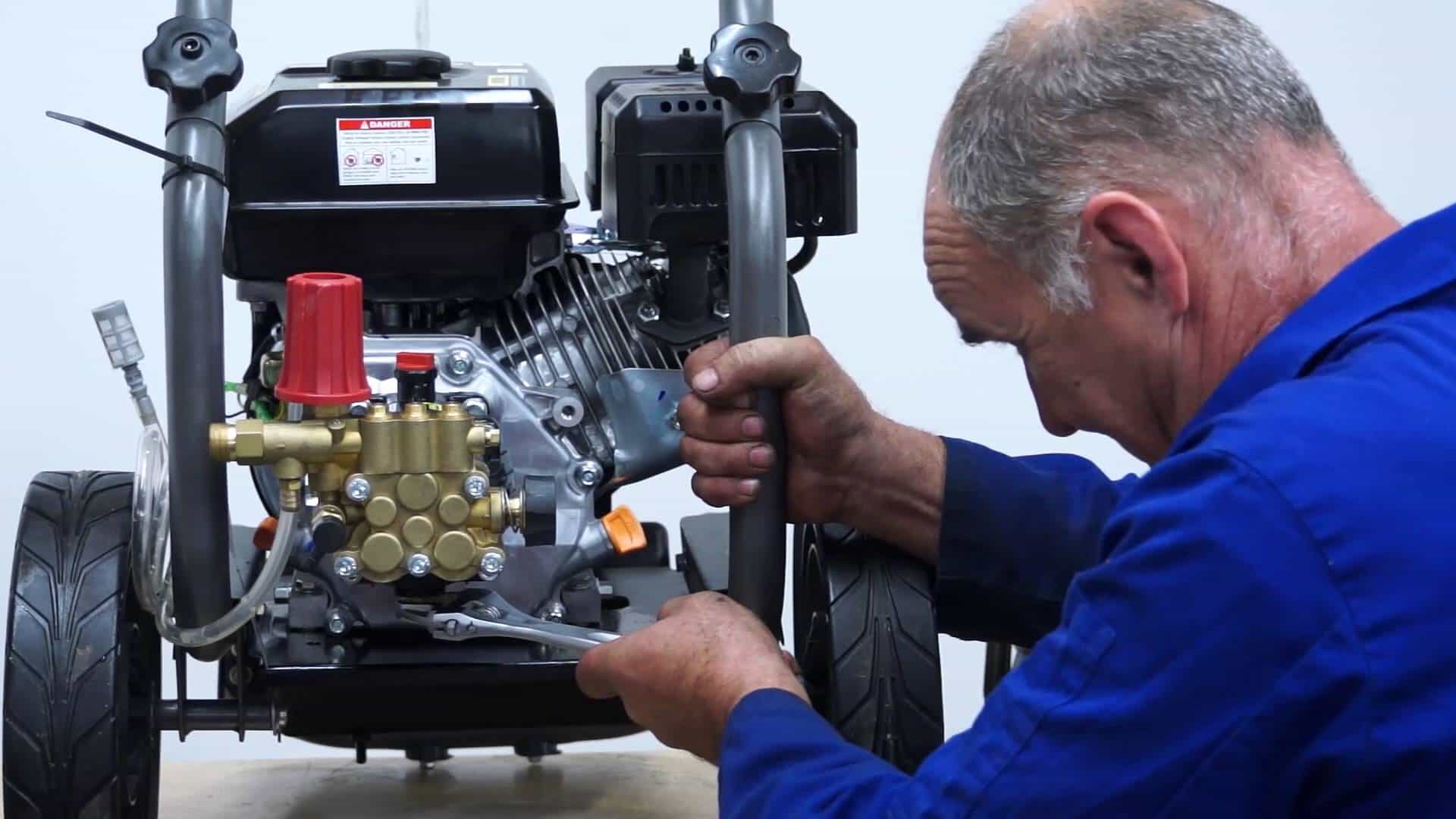Does the exterior of your home need a deep cleaning?
A pressure washer might be the right tool for you. They come in two forms: Petrol-powered and electric-powered – and at times it can be hard to determine how to use one appropriately.
If you want to learn how to use a pressure washer safely, you’re in the right place.
Keep reading to find out how you can safely transform the look of your home.
How Does a Pressure Washer Work?
As mentioned earlier, pressure washers come in two forms: Petrol and electric powered. These machines are used to power a water pump that pressurises the burst from a garden hose or another nozzle attachment to pressures of 1000-3200+ PSI (pounds per square inch)
The capable stream of water forces itself through any cracks and removes gunk from all surfaces. The more pressure the machine creates, the more dirt it can clean off.
In general, a home owner will not need any more than 2400 PSI to get rid of most exterior gunk.
For example, an electric pressure washer, averages in about 1400 PSI – 2000PSI range. They are best used for medium-duty cleaning. Like cleaning a grill, washing a car, removing dirt from scaffolding. This is practically all you need.
On the other hand, a petrol pressure washer, averages in about 2500PSI+. These machines can tackle the most heavy-duty cleaning. Like equipment cleaning, paint removal, stain removal, drain clearing, etc. If that’s what you’re looking for, then by all means – a petrol powered pressure washer is the way to go.
However, before you go out and buy yours – you should be aware of these terms.
PSI – Pounds Per Square Inch
It measures how much pressure a machine can produce. The more PSI, the stronger the spray.
LPM – Litres Per Minute
This is the rate of the water flow. The more LPM increases wash down capabilities.
Alright, let’s move on to spray nozzle selection.
How to Choose an Appropriate Spray Nozzle
The spray nozzle is very important when it comes to cleaning. Some high pressure washers will come with an adjustable nozzle that allows you to access all of the 0 to 60-degree patterns. However, most machines will come with 5 color-coded nozzles, which you have to change manually.
And these colors are coded from highest to lowest pressure:
Red – The 0-degree nozzle is used to remove tough stains and dried debris. It can be used on concrete, metal, etc. But never on siding or wood – it’s too powerful.
Yellow – The 15-degree nozzle is used to remove paint, mildew, and dirt from surfaces. It can remove tough gunk from a distance.
Green – The 25-degree nozzle is used for home scenarios. Such as cleaning boats, cars, furniture, decks, and driveways.
White – The 40-degree nozzle is gentle and can be used on fragile surfaces. Such as flower pots, blinds, windows, etc.
Black – The 60-degree nozzle is used to apply soap on various surfaces.
Rotary – Sometimes you will come across a rotary nozzle, which provides the pressure of a red nozzle with an area of a surface area of a green nozzle. It rotates at about 2200 RPM, increasing cutting power with a larger surface area contact.
How to Use a Pressure Washer Safely
When it comes to using a pressure washer, it can get dangerous. The high pressure can damage property and people. If it can break windows, remove paint, and create holes in concrete – it can probably do the same to a person.
Lacerations, deadly falls, and electrocution are potential risks. However, they only arise from not knowing how to properly use the machine.
So we’ve made this list of safety tips on how to use a pressure washer:
For Electric Pressure Washers
Avoid extension cords. Because you are using water and electricity in conjunction, the risk of electrocution will always be present if the cord is not grounded. It can also reduce the lifespan of your washer, and void the warrants.
So if you decide on using one, read the manual to discover the warranty.
For Petrol Pressure Washers
Never use one indoors or any closed-off space. The machine produces carbon monoxide, which is deadly in closed quarters. You will need fresh air to ventilate the fumes, and protect you from harm.
Also, the machine does get hot, so let it cool off before you put it away to prevent a fire. And don’t let the hoses touch the engine, as they will melt.
Review Instructions
The first thing to do before or after you buy a pressure washer is to read the manual. The instructions possess all of the information for using the machine, how to replace parts, your warranties, and troubleshooting common issues.
Don’t Use the Red Nozzle
The red nozzle is too dangerous. And in most cases, you will never need it. By not using the red one, you avoid so many problems that could come from using it. So think twice before you put it on.
Prepare the Environment
Before you start, make sure to prepare the environment. Close the windows, cover exterior vents and lights. Remove tripping obstacles. Get furniture out of the way.
Gather all of the pets, plants, kids, toys, hoses, and move them out of the way.
Wear Gear
You shouldn’t be doing pressure washer work in sandals or shorts. It’s best to be safe than sorry. Put on ear protection, if you’re using a petrol pressure washer. Steel-toed boots for protection. Gloves for grip. Goggles for unobstructed vision.
No Ladders
Pressure washers are known to put a little kickback on your body when turned on. If you need to reach areas up above, don’t use a ladder. The kickback can create momentum, and make you fall. You don’t want that.
No Hands
A very important rule is to never obstruct the pressure washer with your hands. Or any part of your body for that matter. Don’t spray anyone else, and never let children use it either. These machines can get dangerous, so avoid the troubles of bodily injury.
Pressure Washers Done Right
Now that you know what a pressure washer is, how the nozzles affect its functionality, and how to prevent most of the hazards that come with using one. You are well on your way to giving your home a transformation.
By knowing how to use a pressure washer safely, everything just gets better. Cleaning is more efficient, your safety is at bay, and everybody is having fun.
If you’re interested in buying a high-pressure washer from us (Melbourne Jetter Centre), check out our catalog.


